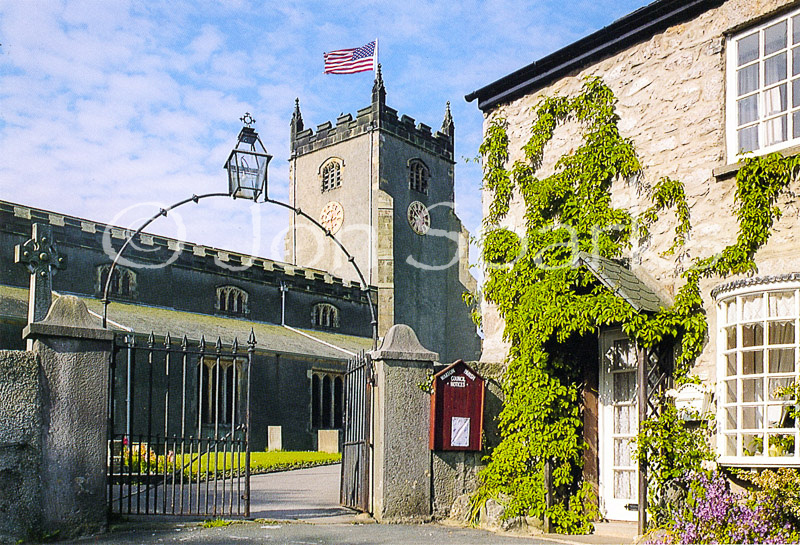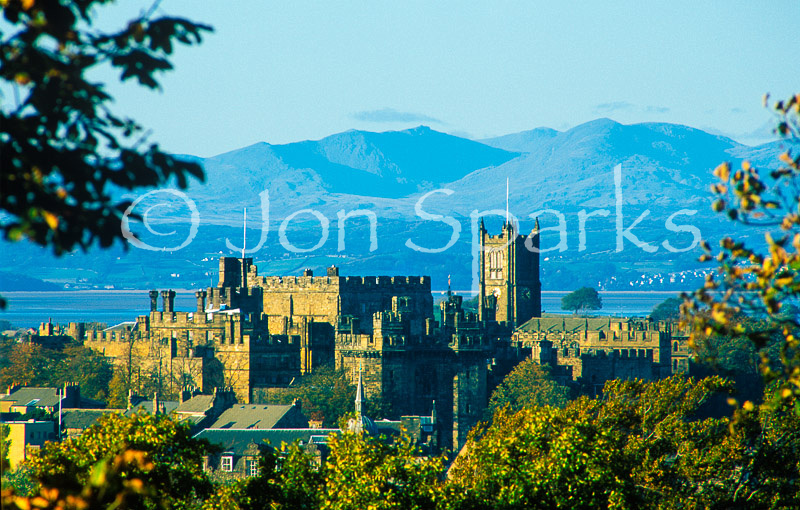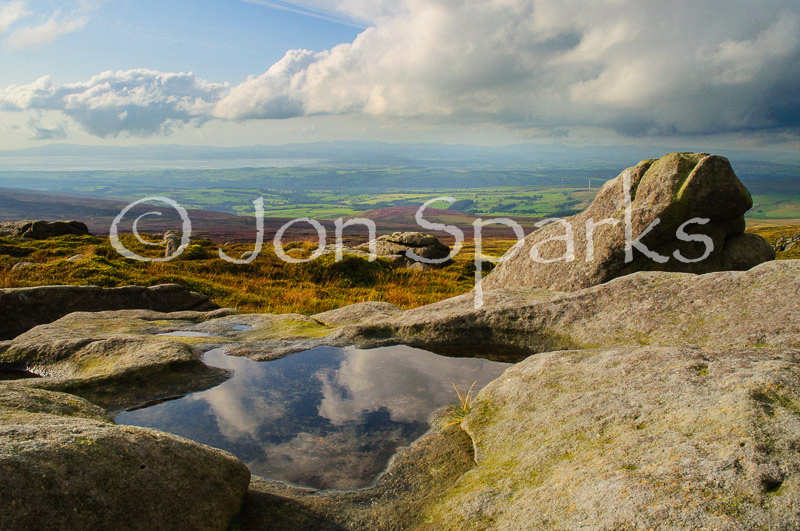Truth and Consequences
The hoary subject of digital manipulation can be relied on to rear its ugly head at regular intervals. It cropped up again last week when the the Take a View Landscape Photographer competition first hailed a winner and then, in short order, announced that he had been disqualified. I don’t propose to discuss this specific case in detail, as it’s already been well explored, notably by Alex Nail. And as I don’t have the right to post the offending image here, my discussion would be hard to follow anyway. It’s indisputable that the ‘winning’ image did in fact breach the rules of the competition (or at least the category in which it was entered) and therefore there was really no question that it had to be disqualified. In fact, there are two problems with it; it appears to be a digital composite, with a sky which doesn’t belong to the rest of the scene; and it’s also a very close imitation of an earlier image by another photographer, so it’s not even genuinely original. Where things get more interesting, if not problematic, is when we look at image manipulation more broadly. When (if ever) is it acceptable to patch, clone or heal an image to remove, say, parked cars, wind turbines or pylons? And when (if ever) is it acceptable to, say, drop an ‘improved’ sky into a shot? I’ve actually written about this before, both on the old ukphotographics website and subsequently in OWPG journal Outdoor Focus (or was it still called Bootprint back then?), and most of what I said stands up pretty well so the next few paragraphs are a straight lift from that earlier piece (with a few cuts indicated by …). You can date it from the fact that I’d just seen Peter Jackson’s The Lord of the Rings: The Two Towers, which premiered in 2002. This was, in fact, before I’d bought my first digital camera (which was in April 2004), but I’d done plenty of work with scanned images by then and knew my way around Photoshop.
The Two Towers is (…) also worth seeing simply to admire the seamless blend of conventional film and digital images. The character Gollum is a brilliant creation, but there are also many amazing partly or wholly digital landscapes. The real footage was shot on location in New Zealand. New Zealand is now Lord of the Rings country, and frenetically selling itself as such. The New Zealand Tourist Authority would no doubt like us to think that what we see on the screen is what we’ll see when we go there. But how, with so much digital content, can we be sure? How, indeed, can we be sure of anything we see? This has been most discussed in relation to news and documentary images, but it concerns all photographers. The Nature Group of the RPS, for example, in its Nature Photographer’s Code of Practice, states that: ‘a nature photograph should convey the essential truth of what the photographer saw at the time it was taken’. (…) I’m not a digital Luddite. I don’t care whether an image is initially captured on silver halide crystals or on a CCD. Nor do I object to all ‘manipulation’. Digital imaging allows us, for instance, to control local tonal values more precisely than would ever be possible with fill-in flash and filters. I’m happy to embrace its power to fine-tune the image: improving shadow detail, correcting colour casts, and of course getting rid of dust and scratches. However, when manipulation alters the actual content of the image, it’s a different matter. I would argue that, just like a nature photograph, ‘a landscape or travel photograph should convey the essential truth of what the photographer saw at the time it was taken’. In the context of a fantasy like The Two Towers the only limit is the human imagination. But in, say, a New Zealand tourist brochure, an image should be - at the very least - a reasonable indication of what one could expect to see at that location. Two incidents during my own career have strengthened this conviction. Over ten years ago, when digital technology was much less commonplace, I was commissioned to photograph a local church which, for historical reasons, flies the Stars and Stripes on July 4th each year. On the day the light was good and there were no parked cars in the way, but there wasn’t quite enough wind. Lancaster Tourism asked me if they could blend in a flag shot by another photographer, and I agreed. The result is hardly a misleading image: you might see it just like this on another July 4th. Still, I hadn’t anticipated that they would tell everyone about this sleight of hand when they launched the resulting greetings card.
Still, it returned to haunt me a few years later. After some detective work I’d found a spot where I could get a view of Lancaster Castle with the Lakeland fells behind. A ‘window’ in the trees framed the shot perfectly and a 300mm lens helped to pull in the distant fells. This has become my most reproduced shot, appearing on greetings cards, posters, calendars and in magazines and tourist brochures. It has also attracted much comment locally, because most people weren’t familiar with this view. Some have simply branded it a ‘fake’ or ‘trick photograph’ – citing the Stars and Stripes image as evidence that I manipulate images.
Tweaking the contrast or colour of an image is a matter of interpretation, at least up to a point. But when you make substantive changes, or allow someone else to do so, you are no longer just interpreting the scene, you are materially altering it. And when that image is presented, explicitly or implicitly, as a representation of a real place, it becomes a falsehood. Which, if you are in the business of travel or landscape photography, is a serious matter. Of course parked cars and power-lines can be an irritating distraction. Cars come and go, and sometimes you can ‘lose’ a power-line just by choosing a different viewpoint. But if you can never see a scene without parked cars, that’s the reality. If there’s no way to see the view without power lines, that too is the reality. The fact that most people would apparently prefer to see the scene without cars or power lines raises other issues: maybe the answer is to campaign for more yellow lines. These issues are not new. Manipulation is as old as photography itself. Combination printing, air-brushing and retouching, double-exposures and slide sandwiching have all been used. We’ve all seen impossible shots created by double exposure, like a telephoto moon hovering over a wide-angle landscape. (These make me almost queasy). If there is anything new about the digital aspect, it is the utterly casual way in which images are manipulated without a second thought. But a falsehood is a falsehood, however it’s created. My resolve on this point was tested again more recently, when a book publisher wanted to ‘remove’ a rock from a potential cover image. However, having declared in the book that none of the images had been manipulated, I really had to stick to my guns. Fortunately we were able to agree on an alternative shot. What’s the harm? Was that rock really important? Maybe not: I could easily have taken a shot without it, just by moving along the beach a few metres. But as the sun came up on that particular morning, that was the shot I felt I wanted to take. I can’t say that removing the rock would significantly mislead anyone about the location. But it would mean that the image was no longer the shot that I took. It would no longer be the embodiment of what I saw and what I felt. What this illustrates is that there’s another side to this debate: it is not just about honesty. For me, it comes back to why I became a photographer in the first place, why photography still excites me, why it will never be just a job. For me, being a photographer is about being there. It’s about the whole experience of a place and the effort to capture an image that says this is what it was like. It’s why the time spent walking around, looking, touching, listening, even smelling, are as important as time spent looking through the viewfinder. And ultimately, photography is about those moments when everything comes together: when the light and the weather conspire to make magic. Moments. Decisive Moments. ‘Being there’ is not only about place; is is also about time. In the studio you may be able to repeat a shot exactly. In the natural world every moment is unique. Clouds move, the light shifts. Over longer time-scales, streams alter their courses; trees grow and fall. So do mountains, if you wait long enough. It may seem paradoxical that a still photograph can capture this dynamism - but there’s no doubt that it can, just as it can capture the dynamism of an athlete or gymnast. And the process of landscape photography – the actual doing of it – means tuning in to the dynamism of land, light and weather. It means developing a relationship with the landscape. It doesn't make it easy, but it does make it endlessly rewarding. I’m more than happy with anything that helps me to express what I saw and felt. Some forms of manipulation – be they filters, traditional darkroom techniques or Photoshop’s Curves dialog – can enhance the image and thereby sharpen that sense of being there. But deleting a rock, or importing a ‘better’ sky from another time or place, destroys it. It negates everything that makes me want to be a landscape photographer. The problem with manipulation, then, is not just about the literal truth of an image or whether it creates a false picture of reality – though this is in itself a very serious issue. It is also about something of more personal concern to all of us: it is about what it means to be a photographer.
And that, in 2002, is where I left it. Ten years later, are we any the wiser? Well, I can tell you, New Zealand is still selling itself as LOTR country – and now The Hobbit is due out soon and Air New Zealand has unveiled the latest in its line of cringe-making safety videos; yes, they really do say ‘Welcome aboard this Air Middle-Earth flight’. In some ways I’ve had to become more relaxed about the manipulation question. I know that when I sell images through libraries such as Alamy, many buyers will routinely ‘improve’ them. And after a few brushes with Alamy’s quality control, I’ve realised that its semi-automated processes don’t always distinguish between dust-spots (which I would naturally clone out) and distant birds in the sky – which, by preference, I would leave untouched. The choice is to remove those distant specks or not to submit that image to Alamy – which represents a significant income stream, probably more than 5% of my total earnings. But when it comes to those images which are under my direct control – like those in the annual Calendar I produce with Pagefast – I’m sticking to my guns. Peer closely at the cover of the 2011 Calendar (also on the August page) and you can just see a couple of wind turbines. Some people. I’m sure, would have removed them, but to me they’re part of the view. Whether I like them or not is irrelevant. The wider view from Ward’s Stone also includes the M6 motorway and Heysham nuclear power stations, both of which I’d describe as greater blots on the landscape – and both of which have appeared in my photos on occasion.
It seems to me that one of the issues surrounding the manipulation of landscape photos is very close to the much more frequently discussed issues around the portrayal of people, – and in particular, women – in editorial, packaging and advertising. It’s not just that the industry favours ‘size zero’ (which I guess is size 6 or 8 in real terms) models. Make-up, lighting, and Photoshop wizardry (lots of Photoshop wizardry) all conspire to present an idealised and sometimes impossible image of ‘womanhood’. And one of the things I worry about is the presentation of landscapes in the same idealised way. I worry that it compromises our ability to see the real landscape for what it is. One consequence may be that we fail to appreciate, and therefore to cherish, the ordinary, slightly scruffy, scraps and tatters of landscape that surround us – yet, just because they’re right on our doorsteps, these are arguably more precious and more important than the grand set-pieces of the Lake District or The Remarkables where photographers tend to congregate. I’m not sure I can reach any simple conclusions. I think about the fact that when I go into a library or bookshop I can find books divided into fact, fiction and fantasy. It sometimes seems that would be nice to think we could categorise photos in the same way. But then again, you can’t always trust books either: I recently posted that I’d reshelved ‘It’s Not About the Bike’ under Fiction. (Which I did, metaphorically though not literally). Instead I’ll leave you with a conundrum – and a confession. This photo (Queenstown Bike Park, Lake Wakatipu and the SS Earnslaw) is a composite. However, the two source images were taken from the same point and very close in time – the metadata tells me they were 77 seconds apart. I actually saw riders on the trail at the same time as I saw the steamer on the lake – they just didn’t quite coincide in the frame. In the original rider image the steamer is just hidden by the trees. So is this an acceptable elision of reality, showing what I could have seen and very nearly did see? Or is it the thin end of the wedge? What do you think?
Comments
No comments posted.
Loading...
|





